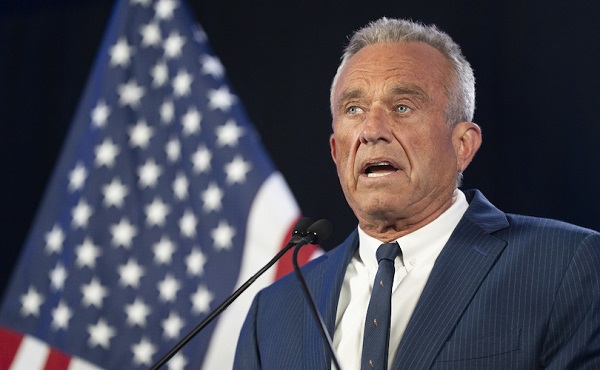Alberta
New Calgary plant to produce luxury vinyl flooring with Alberta oil and gas

Carlos Soares, president of Divine Flooring, inside the company’s 100,000-square-foot warehouse just outside Calgary. Photo for the Canadian Energy Centre
From the Canadian Energy Centre
By Will Gibson
Heartland Polymers to supply recyclable, low emissions polypropylene plastic
Carlos Soares has sold enough flooring to furnish all the residences, businesses and public facilities in a medium-sized city since starting Divine Flooring in 1999.
But now the Calgary entrepreneur will expand into manufacturing luxury flooring using a key Alberta hydrocarbon that will create a more sustainable product and reduce reliance on imports.
“People walk on luxury vinyl floors every day in their homes, malls, stores, hotels— it is the fastest growing category in our industry over the past decade,” says Soares, whose business employs 165 people and 250 contractors in Calgary, Edmonton, Vancouver and Chicago.
“Billions of square feet of new floor coverings are manufactured and installed every year around the world.”
While luxury vinyl products mimic the look of natural woods, they generally contain polyvinyl chlorides or PVCs, a synthetic plastic polymer used to create flexibility and durability.
PVCs are difficult to recycle and take a lot of energy to produce. Most PVC production is in Asia, with roughly half of the world’s capacity in China.
Soares has discovered a more environmentally friendly alternative to PVCs produced at the Heartland Polymers plant near Edmonton.
 The Heartland Polymers project in Fort Saskatchewan, Alta. Photo courtesy Inter Pipeline Ltd.
The Heartland Polymers project in Fort Saskatchewan, Alta. Photo courtesy Inter Pipeline Ltd.
Opened by Inter Pipeline Ltd. in July 2022, the facility produces polypropylene plastic pellets directly from locally sourced propane, a first of its kind in North America. Polypropylene is one of the world’s most widely used recyclable plastics.
By converting about 22,000 barrels per day of propane into polypropylene instead of using it as fuel, Heartland says it cuts up to one million tonnes of greenhouse gas emissions annually — the equivalent of about 217,000 cars.
“Polypropylene is our secret sauce. It can do all the things PVCs do,” says Soares.
“But it is made in Alberta and it is a low-emission product free of chemicals that make it tough to recycle.”
Soares and his partners in a venture called PolyCo have started construction on a $45 million facility in Balzac, about 25 kilometres north of downtown Calgary, to manufacture luxury vinyl flooring using Heartland polypropylene.
A second-generation Canadian and entrepreneur, he wants to give back to the place where he grew up in a meaningful way.
“My grandparents moved to Canada from Portugal in 1967 and this country has given our family so much. My father started his own welding shop in 1974 and ran it for years with old-school values. He always taught me to do the right thing and don’t compromise on quality,” he says.
“That’s what we want to do with this proposal. We are putting more Canadians to work to make a more sustainable product and strengthen our local economy.”
Production at the plant is scheduled to start in the third quarter of 2027. It will employ 100 people when it reaches full capacity, initially producing 28 million square feet of flooring every year. A second phase will eventually bring the plant’s total capacity to 50 million square feet annually.
The plant will be a “zero waste” facility, where all the dust and trimmings from the process will be swept up and put back into future production.
In July, Emissions Reduction Alberta awarded the project $5 million through its Advanced Materials Challenge, a competition funding innovative low-emission products in the province.
The funding is part of $49 million in ERA grants to 18 projects, determined after independent review by a team of experts in science, engineering, business development, commercialization, financing and greenhouse gas quantification.
Together, the projects have a total estimated value of $198 million.
ERA’s goal is to accelerate projects that can improve the economy and the environment, says Justin Riemer, the agency’s CEO.

“In the case of the PolyCo project, it highlights how to better utilize the supply chain we have here in Alberta. Everything this plant will need to source is literally within a three-hour drive,” he says.
ERA has provided more than $1 billion in grants to more than 300 projects valued at $7 billion in 16 years across the province.
“Of all the completed projects who’ve received funding, 50 per cent have been commercialized, which is a much better success rate than venture capital gets,” says Riemer, who has led ERA for three years.
“It’s important to have this funding available because a lot of financial infrastructure in this country is risk-adverse to trialing and commercializing innovation technology.”
The agency’s grants are financed through Alberta’s Technology Innovation and Emissions Reduction (TIER) fund, which collects contributions from the oil and gas sector under the province’s carbon pricing and trading system.
“ERA receives about 10 per cent of the TIER contributions,” Riemer says.
“Through these competitions, we have managed to see successful commercialization of technologies across a broad array of sectors beyond oil and gas including forestry, agriculture, power generation, critical minerals and even nuclear.”
For Soares, the vote of confidence given by the agency in the proposal was crucial.
“This ERA grant is huge for this project to go ahead but so was the decision. It gives us the confidence the government is behind the project and wants to see it materialize,” he says.
“They are serious about real ideas that can produce sustainable and affordable products right here.”
Soares is unapologetic in having his project funded by carbon levies collected from oil and gas.
“We produce oil and gas more responsibly than anywhere in the world in Alberta and I’m proud of that even though I don’t work directly in the industry,” he says.
“The fact that oil and gas contribute to grants that help create more sustainable products and technologies demonstrates the province’s commitment to doing things better.”
Alberta
Equalization program disincentivizes provinces from improving their economies
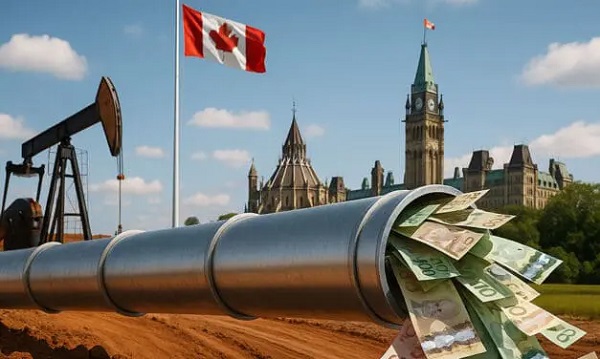
From the Fraser Institute
By Tegan Hill and Joel Emes
As the Alberta Next Panel continues discussions on how to assert the province’s role in the federation, equalization remains a key issue. Among separatists in the province, a striking 88 per cent support ending equalization despite it being a constitutional requirement. But all Canadians should demand equalization reform. The program conceptually and practically creates real disincentives for economic growth, which is key to improving living standards.
First, a bit of background.
The goal of equalization is to ensure that each province can deliver reasonably comparable public services at reasonably comparable tax rates. To determine which provinces receive equalization payments, the equalization formula applies a hypothetical national average tax rate to different sources of revenue (e.g. personal income and business income) to calculate how much revenue a province could generate. In theory, provinces that would raise less revenue than the national average (on a per-person basis) receive equalization, while province’s that would raise more than the national average do not. Ottawa collects taxes from Canadians across the country then redistributes money to these “have not” provinces through equalization.
This year, Ontario, Quebec, Manitoba and all of Atlantic Canada will receive a share of the $26.2 billion in equalization spending. Alberta, British Columbia and Saskatchewan—calculated to have a higher-than-average ability to raise revenue—will not receive payments.
Of course, equalization has long been a contentious issue for contributing provinces including Alberta. But the program also causes problems for recipient or “have not” provinces that may fall into a welfare trap. Again, according to the principle of equalization, as a province’s economic fortunes improve and its ability to raise revenues increases, its equalization payments should decline or even end.
Consequently, the program may disincentivize provinces from improving their economies. Take, for example, natural resource development. In addition to applying a hypothetical national average tax rate to different sources of provincial revenue, the equalization formula measures actual real-world natural resource revenues. That means that what any provincial government receives in natural resource revenue (e.g. oil and hydro royalties) directly affects whether or not it will receive equalization—and how much it will receive.
According to a 2020 study, if a province receiving equalization chose to increase its natural resource revenues by 10 per cent, up to 97 per cent of that new revenue could be offset by reductions in equalization.
This has real implications. In 2018, for instance, the Quebec government banned shale gas fracking and tightened rules for oil and gas drilling, despite the existence of up to 36 trillion cubic feet of recoverable natural gas in the Saint Lawrence Valley, with an estimated worth of between $68 billion and $186 billion. Then in 2022, the Quebec government banned new oil and gas development. While many factors likely played into this decision, equalization “claw-backs” create a disincentive for resource development in recipient provinces. At the same time, provinces that generally develop their resources—including Alberta—are effectively punished and do not receive equalization.
The current formula also encourages recipient provinces to raise tax rates. Recall, the formula calculates how much money each province could hypothetically generate if they all applied a national average tax structure. Raising personal or business tax rates would raise the national average used in the formula, that “have not” provinces are topped up to, which can lead to a higher equalization payment. At the same time, higher tax rates can cause a decline in a province’s tax base (i.e. the amount of income subject to taxes) as some taxpayers work or invest less within that jurisdiction, or engage in more tax planning to reduce their tax bills. A lower tax base reduces the amount of revenue that provincial governments can raise, which can again lead to higher equalization payments. This incentive problem is economically damaging for provinces as high tax rates reduce incentives for work, savings, investment and entrepreneurship.
It’s conceivable that a province may be no better off with equalization because of the program’s negative economic incentives. Put simply, equalization creates problems for provinces across the country—even recipient provinces—and it’s time Canadians demand reform.
Alberta
Provincial pension plan could boost retirement savings for Albertans
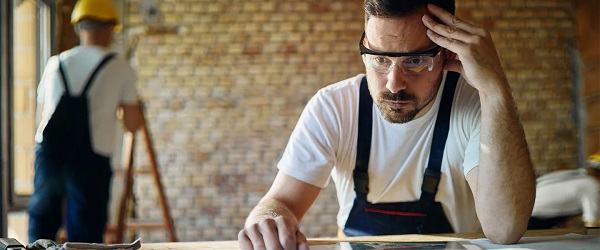
From the Fraser Institute
By Tegan Hill and Joel Emes
In 2026, Albertans may vote on whether or not to leave the Canada Pension Plan (CPP) for a provincial pension plan. While they should weigh the cost and benefits, one thing is clear—Albertans could boost their retirement savings under a provincial pension plan.
Compared to the rest of Canada, Alberta has relatively high rates of employment, higher average incomes and a younger population. Subsequently, Albertans collectively contribute more to the CPP than retirees in the province receive in total CPP payments.
Indeed, from 1981 to 2022 (the latest year of available data), Alberta workers paid 14.4 per cent (annually, on average) of total CPP contributions (typically from their paycheques) while retirees in the province received 10.0 per cent of the payments. That’s a net contribution of $53.6 billion from Albertans over the period.
Alberta’s demographic and income advantages also mean that if the province left the CPP, Albertans could pay lower contribution rates while still receiving the same retirement benefits under a provincial pension plan (in fact, the CPP Act requires that to leave CPP, a province must provide a comparable plan with comparable benefits). This would mean Albertans keep more of their money, which they can use to boost their private retirement savings (e.g. RRSPs or TFSAs).
According to one estimate, Albertans’ contribution rate could fall from 9.9 per cent (the current base CPP rate) to 5.85 per cent under a provincial pension plan. Under this scenario, a typical Albertan earning the median income ($50,000 in 2025) and contributing since age 18, would save $50,023 over their lifetime from paying a lower rate under provincial pension plan. Thanks to the power of compound interest, with a 7.1 per cent (average) nominal rate of return (based on a balanced portfolio of investments), those savings could grow to nearly $190,000 over the same worker’s lifetime.
Pair that amount with what you’d receive from the new provincial pension plan ($265,000) and you’d have $455,000 in retirement income (pre-tax)—nearly 72 per cent more than under the CPP alone.
To be clear, exactly how much you’d save depends on the specific contribution rate for the new provincial pension plan. We use 5.85 per cent in the above scenario, but estimates vary. But even if we assume a higher contribution rate, Albertan’s could still receive more in retirement with the provincial pension plan compared to the current CPP.
Consider the potential with a provincial pension contribution rate of 8.21 per cent. A typical Albertan, contributing since age 18, would generate $330,000 in pre-tax retirement income from the new provincial pension plan plus their private savings, which is nearly one quarter larger than they’d receive from the CPP alone (again, $265,000).
Albertans should consider the full costs and benefits of a provincial pension plan, but it’s clearly Albertans could benefit from higher retirement income due to increased private savings.
-

 Crime2 days ago
Crime2 days agoCharlie Kirk ASSASSINATED
-
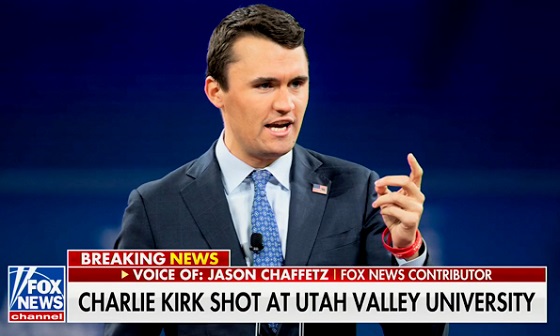
 Crime2 days ago
Crime2 days agoConservative speaker and celebrity Charlie Kirk shot during Q & A event at Utah Valley University
-

 Alberta1 day ago
Alberta1 day agoAlberta deserves a police force that actually reflects its values
-
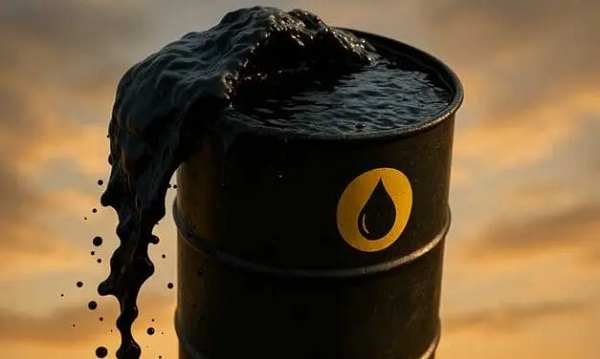
 Alberta1 day ago
Alberta1 day agoOPEC+ chooses market share over stability, and Canada will pay
-

 Crime2 days ago
Crime2 days agoAlleged Killer Of Charlie Kirk Caught
-
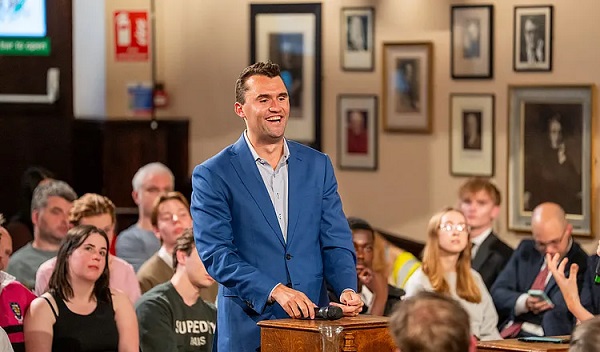
 Opinion2 days ago
Opinion2 days agoThe Charlie Kirk I Knew
-

 Crime2 days ago
Crime2 days ago‘Dark Moment For America’: Trump Addresses Nation After Kirk Assassination
-

 Crime14 hours ago
Crime14 hours agoFormer NYPD Inspector Breaks Down How Charlie Kirk’s Shooter Will Be Caught




